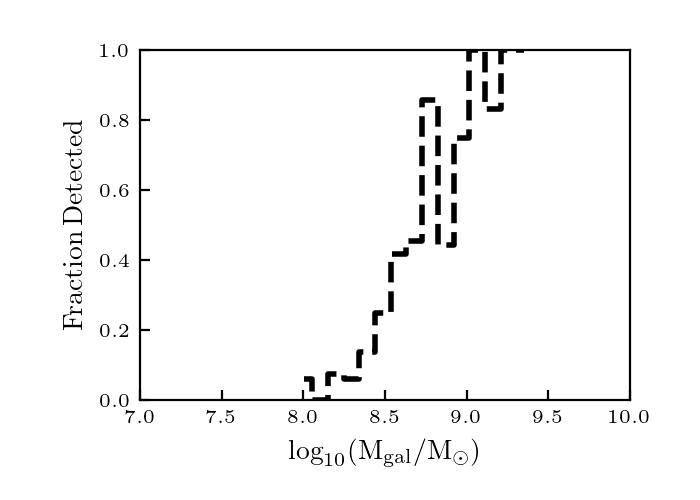Nicole Drakos
Research Blog
Welcome to my Research Blog.
This is mostly meant to document what I am working on for myself, and to communicate with my colleagues. It is likely filled with errors!
This project is maintained by ndrakos
Results for JWST Proposal Part I
We want positions and magnitudes in two snapshots (redshifts 7 and 9) in the F200W Filter.
Generating magnitudes
I will use snapshot_121 (\(z=9.05\)) and snapshot_159, (\(z=7.02\)).
I plan to read in a snapshot halo catalog, perform abundance matching, assign an SED and get the magnitude in F200W (using the FSPS built-in jwst_f200W band).
There are a couple of things that need to be improved in the SED generation procedure (e.g. ages), but I think that it will probably be fine for now; if there is time I can work on this and incorporate it into the catalog for the proposal figure.
Mass Resolution
Right now I have \(512^3\), \(1024^3\) and \(2048^3\) simulations. The 512 simulations are complete to galaxy masses above approximately \(10^9\,M_{\odot}\), and I expect the 2048 simulations to be complete above masses of approximately \(10^7 \,M_{\odot}\).
First, I want to see what mass resolution I need to resolve most of the galaxies at the given redshift. To do this, I created a “sample mock”, in which I generated 1000 galaxy masses at redshift \(z=7\) from the SMFs above a mass of \(10^{7}\,M_{\odot}\). I then calculated the F200W magnitude, and found the fraction of galaxies that are brighter than the magnitude limit of \(27.5\).
Here is the plot:

Note that since only tested this on 1000 galaxies, I did not generate many high mass galaxies. However, this demonstrates that at redshift 7, we don’t really need to have galaxies with masses above \(10^8\) therefore I will use the \(1024^3\) simulations. In the interest of time, I will probably just run AHF directly on the desired snapshots, since I still need to update my code to read in the Rockstar catalogs.